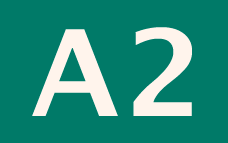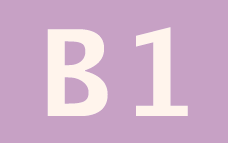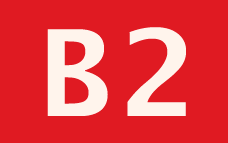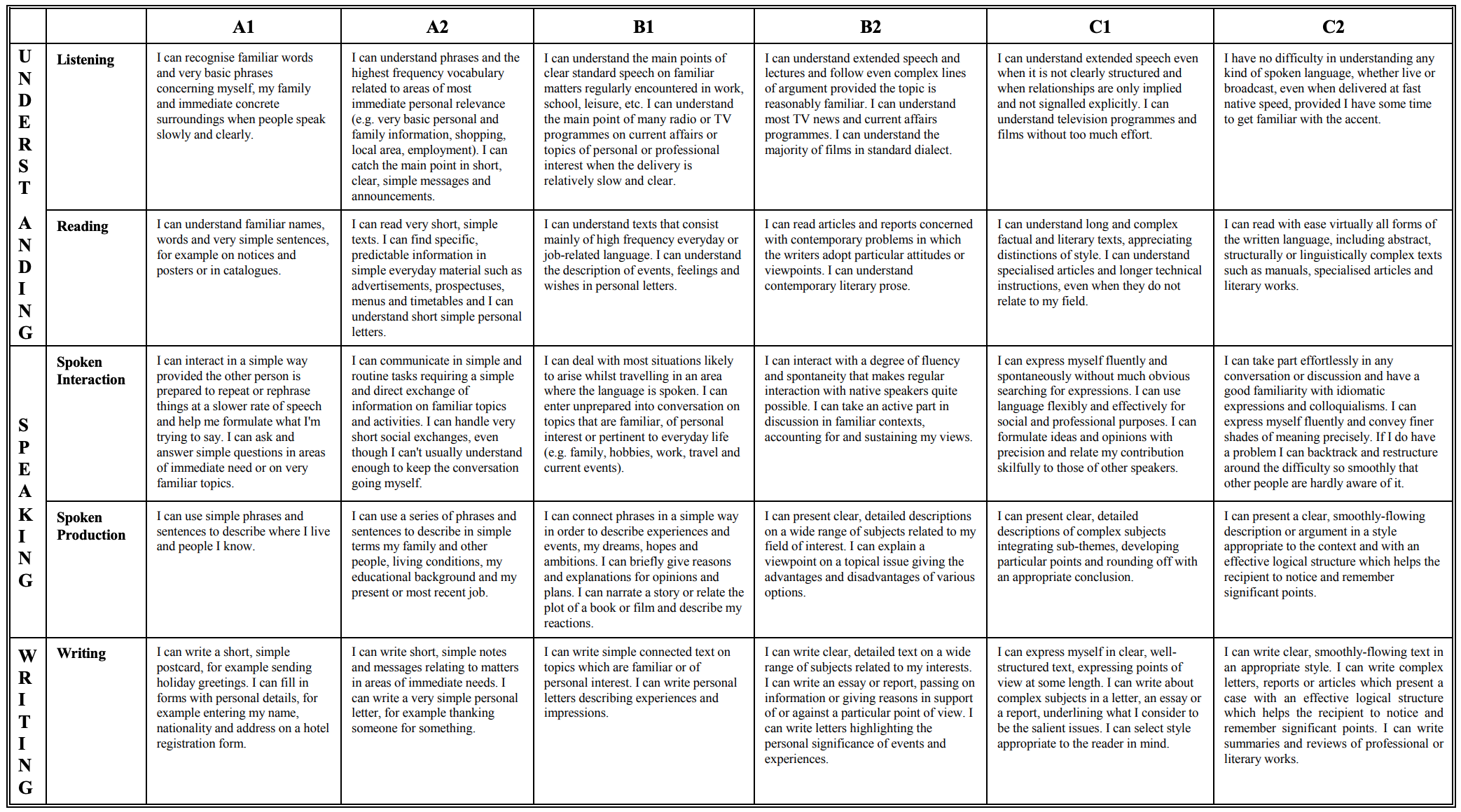The Common European Framework of Reference
for Languages (CEFR)
Introduction
At its simplest, the CEFR can be thought of as a framework which enables students to independently measure their ‘second’ language skills in over forty languages! However, whilst this is perhaps one of the most interesting components of the CEFR, self-assessment is only part of the overall framework. The CEFR attempts to standardise specific aspects of language learning and language assessment by using ‘learning levels’ defined by a list of ‘can do’ statements. As a framework, the CEFR is non-prescriptive and as such is extremely flexible. This probably accounts for its continued growth and adoption by many schools, universities and businesses, not only in Europe but worldwide.
The Deaf connection....
The CEFR was designed to facilitate ‘foreign’ language learning and assessment for hearing people – i.e. the focus of the CEFR is upon the learning of spoken foreign languages. The question that immediately arises is, can we use the same framework within a Deaf context? Can a Deaf person, who has British Sign Language (BSL) as their primary language, benefit from the tools presented by the CEFR to learn English, as if it were a ‘foreign’ language?
Let’s take a look at some of the main features of the CEFR. Please note that the following information is only the briefest of summaries and as such does the CEFR a great dis-service. If you want a much more detailed description of the CEFR please visit this link:
CEFR
1. Common Reference Level - Global Scales
This is perhaps the main feature of the CEFR. There are six main levels ranging from ‘beginner’ to ‘mastery’ (A1 – C2) and each level outlines what language components are necessary for each stage. These global scales are simplistic summaries – they are easily understood by non-specialist users whilst also providing teachers or curriculum planners with a solid platform to begin with.

Beginner
- Can understand and use familiar everyday expressions and very basic phrases aimed at the satisfaction of needs of a concrete type.
- Can introduce themselves and others and can ask and answer questions about personal details such as where they live, people they know and things they have.
- Can interact in a simple way provided the other person talks slowly and clearly and is prepared to help.

Elementary
- Can understand sentences and frequently used expressions related to areas of most immediate relevance (e.g. very basic personal and family information, shopping, local geography, employment).
- Can communicate in simple and routine tasks requiring a simple and direct exchange of information on familiar and routine matters.
- Can describe in simple terms aspects of their background, immediate environment and matters in areas of immediate need.

Intermediate
- Can understand the main points of clear standard input on familiar matters regularly encountered in work, school, leisure, etc.
- Can deal with most situations likely to arise while travelling in an area where the language is spoken.
- Can produce simple connected text on topics that are familiar or of personal interest.
- Can describe experiences and events, dreams, hopes and ambitions and briefly give reasons and explanations for opinions and plans.

Upper Intermediate
- Can understand the main ideas of complex text on both concrete and abstract topics, including technical discussions in their field of specialization.
- Can interact with a degree of fluency and spontaneity that makes regular interaction with native speakers quite possible without strain for either party.
- Can produce clear, detailed text on a wide range of subjects and explain a viewpoint on a topical issue giving the advantages and disadvantages of various options.

Advanced
- Can understand a wide range of demanding, longer clauses, and recognize implicit meaning.
- Can express ideas fluently and spontaneously without much obvious searching for expressions.
- Can use language flexibly and effectively for social, academic and professional purposes.
- Can produce clear, well-structured, detailed text on complex subjects, showing controlled use of organizational patterns, connectors and cohesive devices.

Mastery
- Can understand with ease virtually everything heard or read.
- Can summarize information from different spoken and written sources, reconstructing arguments and accounts in a coherent presentation.
- Can express themselves spontaneously, very fluently and precisely, differentiating finer shades of meaning even in the most complex situations.
2. Common Reference Level - Self-Assessment Grid
Whilst the global scales provide a starting point for students and teachers alike, the self-assessment grid gives students more detailed descriptors through which they might more accurately self-assess their secondary language skills. In the table below you can see three main categories, two of which have sub-categories:
- Understanding
- Listening
- Reading
- Speaking
- Spoken Interaction
- Spoken Production
- Writing

Clearly one of the main categories – ‘speaking’, is of no relevance to us and neither is the sub category of ‘listening’. However, the flexibility of this framework means that the CEFR can still be a valuable tool for Deaf literacy.